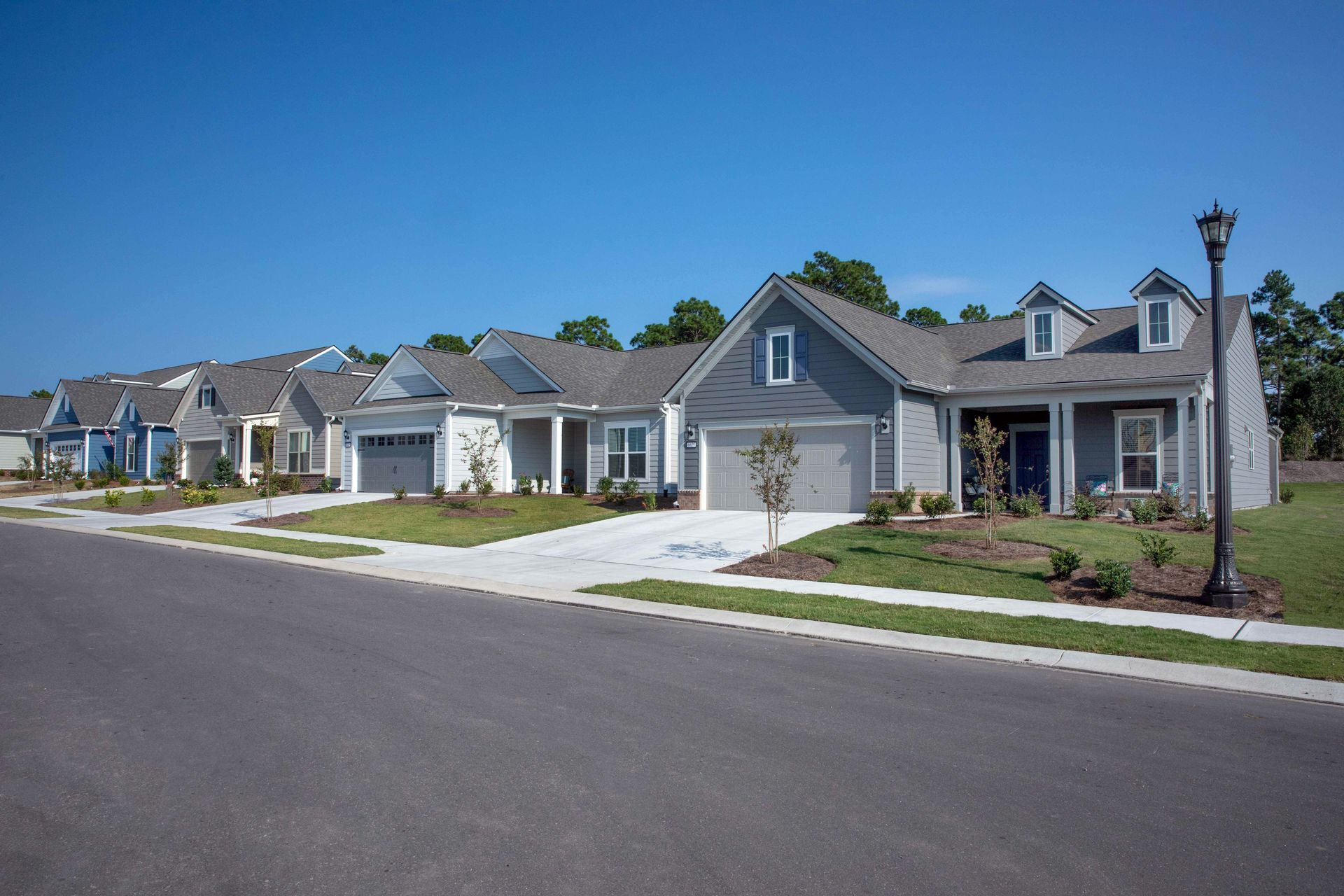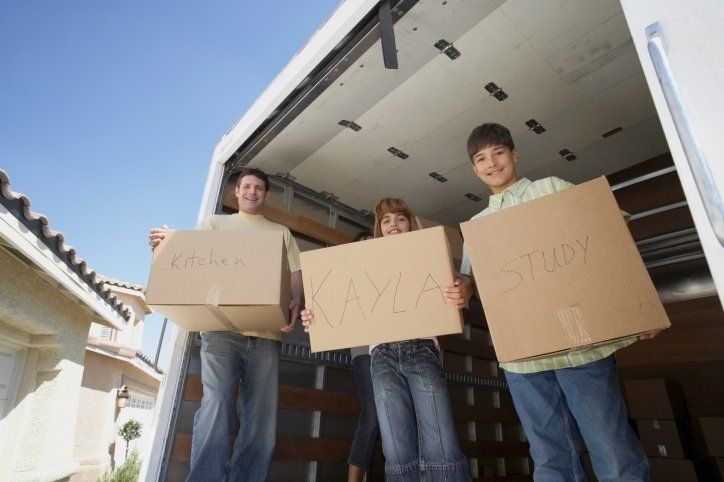The History of Myrtle Beach
Happy Monday! It's a new year, and with new years come thoughts of beginnings. And of course, beginnings make me think of where we started. Today, I thought we would take a trip down memory lane and learn a little bit about the town that we at Dusty Rhodes Properties call home. Myrtle Beach has been a fixture in the state of South Carolina for decades, and while people from across the world come every year to enjoy it with us locals, it's nice to look back at what really makes Myrtle Beach the town that we know and love. So with that in mind, here's a look into the past, from Carolana.com:
Myrtle Beach was incorporated as a town in 1938 and became a city in 1957. Its name comes from the wax myrtle, a shrub that grows abundantly in the area. Our 25,000 permanent residents welcome millions of visitors to this full-service resort community of Horry County, South Carolina. Guests come to enjoy the wide beaches, the Atlantic Ocean, and an incredible range of activities, entertainment, golf, shopping, and dining.
History records that the first tourists here were a party of Spaniards from Hispaniola, who first landed about forty miles north of present-day Myrtle Beach in 1526 and eventually established the first European settlement in the US about 30 miles to the south. That settlement, San Miguel de Guadelupe at present-day Georgetown, was settled by Lucas Vasquez de Allyon, but abandoned the following year, and the group returned to Hispaniola.
In the next three centuries, the region's population grew, but slowly. In the late 1800s and early 1900s, people began to "vacation" here, although it was quite rustic. Houses and camps were sparse, and there were only few permanent residents at the turn of the century. But, drawn by the ocean, sand and trees, people began to call Myrtle Beach "home" as the 1900s progressed.
Today, Myrtle Beach is a well known destination for vacationers from around the country, Canada, and abroad. According to the 2000 U.S. Census, the city is at the heart of the thirteenth fastest-growing metropolitan area in the US.
Before Europeans arrived on the coast of South Carolina, Native Americans were the sole residents, and they lived off the land and the bounty of the local waters. They were the Waccamaw and Winyah Indians, and they called the area "Chicora," which simply meant "the land." Although documented history of these tribes is scarce, evidence of their existence continues to turn up. Arrowheads have been found on the beach, riverbanks, and in farmers' fields. A burial mound was discovered on Waites Island near Little River. The remains of an Indian village were unearthed on Wachesaw Plantation near Murrells Inlet, including pottery shards, tools, and other artifacts. At the Horry County Museum in Conway, several exhibits shed light on what life was like for these early residents.
With the passing of centuries and the arrival of Europeans, the population and landscape began to change. English colonists laid out plans for Georgetown, the state's third oldest city, in 1729. Surrounded by rivers and marshlands, Georgetown became the center of America's rice empire. Crops of indigo, cotton, and lumber also contributed to the wealthy economy. A rich plantation culture took root here and flourished, in no small measure as a result of the diligence and manpower of African slaves, many with first-hand knowledge of rice cultivation from their homelands.
Before the American Civil War, wealthy plantation owners turned Pawleys Island into one of the first summer resorts on the Atlantic coast. Planters and their families spent summers on the cool, breezy island to avoid malaria and other deadly diseases associated with the more swampy, still conditions of the plantation sites. Historic cottages, inns, and other buildings still stand on Pawleys Island, which is in northern Georgetown County just a few miles south of Myrtle Beach.
After the American Civil War and the emancipation of slaves, Georgetown's rice plantation culture disappeared, leaving behind a rich history and culture that residents hold dear. Hopsewee and other historic plantations, Georgetown's Rice Museum, and Brookgreen Gardens offer glimpses into Georgetown's past. The Georgetown Historic District, with its historic churches and homes, is listed on the National Register of Historic Places.
Horry County (pronounced "oh-ree" or "or-ee"), bounded by rivers on one side and the Atlantic Ocean on the other, was cut off from the plantation culture that flourished elsewhere along the coast. Horry residents, in what is now the Conway area, were hardworking farmers, timbermen, and turpentine distillers who bartered for their necessities. A typical family in 1875 earned approximately $2.50 a year in what was nearly a cashless economy.
Until the 1900s, bridges and railroads from Conway to the beaches did not exist; only struggling farmers and fishermen inhabited these distant beaches. Eventually, in pursuit of summer recreation, families from Conway were ferried across the Waccamaw River and rode in wagons from the river to the beach - which was essentially completely devoid of any commercial development prior to 1900.
In 1900, Burroughs & Collins Company, a timber-turpentine firm with extensive beachfront holdings, began developing the resort potential of the Grand Strand by constructing a railroad to the beach - the Conway & Seacoast Railroad. The company built the first hotel, the Seaside Inn, in 1901. At that time, oceanfront lots sold for $25 to those with ready cash. Less affluent individuals could purchase a lot one row back and pay in yearly installments of $2.50. Buyers received an extra lot free if they built a home valued at $500 or more. Mrs. F. E. Burroughs, wife of the founder of the Burroughs & Collins Company, hosted (and won) a contest to name the town. Myrtle Beach was chosen because of the many wax myrtle trees growing wild along the shore. Prior to this, the villages was referred to as New Town or Newtown.
In 1912, Chicago businessman Simeon B. Chapin purchased property and invested capital in the town's development. Myrtle Beach's public park and adjacent library are named for him. Another landmark bearing his name is the Franklin G. Burroughs-Simeon B. Chapin Art Museum.
In the 1920s, a group of businessmen built an upscale resort called Arcady at the north end of the community. The legendary resort was the rage among affluent society and included the present Pine Lakes International Country Club, the area's first golf club (and birthplace of the magazine Sports Illustrated), and the grand Ocean Forest Hotel. The Ocean Forest, with its 300 rooms, indoor and outdoor pools, health club, stables, and crystal chandeliers, remained the center of Myrtle Beach social life for nearly thirty years. The stately building was torn down in 1974 to allow for new development.
The Intracoastal Waterway was opened to pleasure boats and commercial shipping in 1936, and Myrtle Beach was incorporated in 1938. The Myrtle Beach Air Force Base was established in the 1940s and used for coastal patrols during World War II. The Myrtle Beach Pavilion opened in 1949 and continues to delight families year after year. Hurricanes have always played a crucial role in Myrtle Beach area history and development. In 1954, Hurricane Hazel demolished buildings and trees all along the Strand and, consequently, cleared the way for newer, larger hotels and homes.
During the 1960s, a golf boom began in which new courses were opened nearly every year. Today, the Grand Strand boasts more than 120 golf courses. In the 1970s and '80s, construction of attractions, homes, retail shops, and other developments increased steadily, triggering another boom in the early '90s that resulted in the Myrtle Beach area becoming one of the fastest growing metropolitan areas in the country.
Phenomenal expansion and development have contributed to the Grand Strand's national reputation as a year-round resort, with numerous hotels, golf courses, restaurants, theaters, entertainment/shopping complexes, and attractions. Each year, nearly 13 million visitors come to the Grand Strand, and thousands of new residents relocate to the area.
Source: Carolana.com
Dusty Rhodes Properties is the Best Realtor in Myrtle Beach! We do everything in our power to help you find the home of your dreams. With experience, expertise, and passion, we are the perfect partner for you in Myrtle Beach, South Carolina. We love what we do and it shows. With more than 22 years of experience in the field, we know our industry like the back of our hands. There’s no challenge too big or too small, and we dedicate our utmost energy to every project we take on. We search thousands of the active and new listings from Aynor, Carolina Forest, Conway, Garden City Beach, Longs, Loris, Murrells Inlet, Myrtle Beach, North Myrtle Beach, Pawleys Island, and Surfside Beach real estate listings to find the hottest deals just for you!
Share





